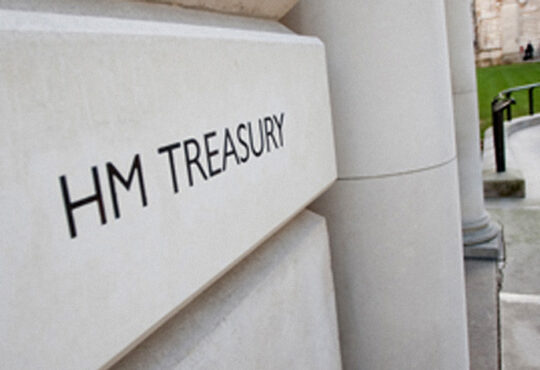Small Group Of Hedge Funds Wields Dominance In US Treasury Market: ‘A Concentration Of Vulnerability Has Built Up,’ IMF Warns


The International Monetary Fund (IMF) has raised concerns about a small number of hedge funds that now hold significant control over the U.S. Treasury futures market.
“A concentration of vulnerability has built up, as a handful of highly leveraged funds account for most of the short positions in Treasury futures,” the IMF’s April 2024 Global Financial Stability (GFS) report states.
This concentration of short positions by highly leveraged funds could pose systemic threats to the financial stability of not just the U.S., but the global economy, according to the Washington-based institution.
Increasing Bets On Treasury Futures By Hedge Funds
Leveraged hedge funds have ramped up their short positions in U.S. Treasury futures, capitalizing on the basis trade, which involves exploiting the price discrepancies between cash Treasuries and their futures counterparts.
These funds use borrowed money from the repurchase-agreement (repo) market to increase their potential returns.
The IMF warns that the scale of these bets has grown large enough to spark concerns among financial stability observers.
“Some of these funds may have become systemically important to the Treasury and repo markets, and stresses they face could affect the broader financial system,” the IMF stated.
Too Big To Fail?
Essentially, the report suggests that certain funds have become so crucial to the Treasury and repo markets that they might now be considered too big to fail.
Any significant liquidity problems they encounter could ripple through the broader financial system, causing widespread instability.
The concentration of leverage among these funds is stark. Nearly half of all two-year Treasury futures positions are held by fewer than eight traders. For longer maturities like five and ten years, just eight hedge funds control about 30% of the market.
In August last year, hedge fund manager Bill Ackman made headlines by initiating a short position on U.S. 30-year Treasuries, anticipating soaring U.S. budget deficits. This move netted him over $200 million when he closed the position in October.
So far in 2024, U.S. Treasury bonds have underperformed. The iShares 20+ Year Treasury Bond ETF (NASDAQ:TLT) has dropped almost 9% since the beginning of the year, and the Vanguard Extended Duration Treasury ETF (NYSE:EDV) has seen a decline exceeding 12%.
US Debt-To-GDP Ratio Set To Rise To 134% By 2029
It remains uncertain whether the hedge funds’ substantial short positions are in part a bet against U.S. fiscal health, anticipating that yields will remain elevated due to ongoing loose fiscal policies.
The IMF’s ‘Fiscal Monitor’ suggests that increasing public debt, primarily in China and the United States, coupled with tightening monetary policies, are contributing to higher long-term government bond yields and their volatility in the U.S.
In 2023, the U.S. general government fiscal deficit expanded dramatically to 8.8% of GDP, up from 4.1% the previous year, driven by a sharp decline in income tax revenues and increased spending. The deficit is expected to slightly decrease to 6.6% of GDP in 2024 but will rise again in 2025.
The IMF projects that the U.S. debt-to-GDP ratio will continuously climb from 122% in 2023 to nearly 134% by 2029.
“Public gross financing needs will remain at levels higher than those before the pandemic over the medium term based on high existing debt burdens and persistent fiscal deficits. China and the United States have large gross financing needs of more than 25 percent of GDP in the near term,” the IMF wrote.
The IMF’s forecasts suggest that the U.S. Treasury will need to issue a substantial amount of bonds to refinance maturing debt and cover the spiraling deficit, a reality that hedge funds are keenly exploiting.
| Year | Government Deficit (As % of GDP) | Government Debt As % of GDP |
| 2023 | -8.8 | 122.1 |
| 2024 | -6.5 | 123.3 |
| 2025 | -7.1 | 126.6 |
| 2026 | -6.6 | 128.9 |
| 2027 | -6.2 | 130.7 |
| 2028 | -6.4 | 132.6 |
| 2029 | -6 | 133.9 |
Read now: Treasury Yields Head To ‘Danger Zone’: Analyst Forecasts Potential Spike To 5%, Disorderly Sell-Off For Markets
Photo: Shutterstock






